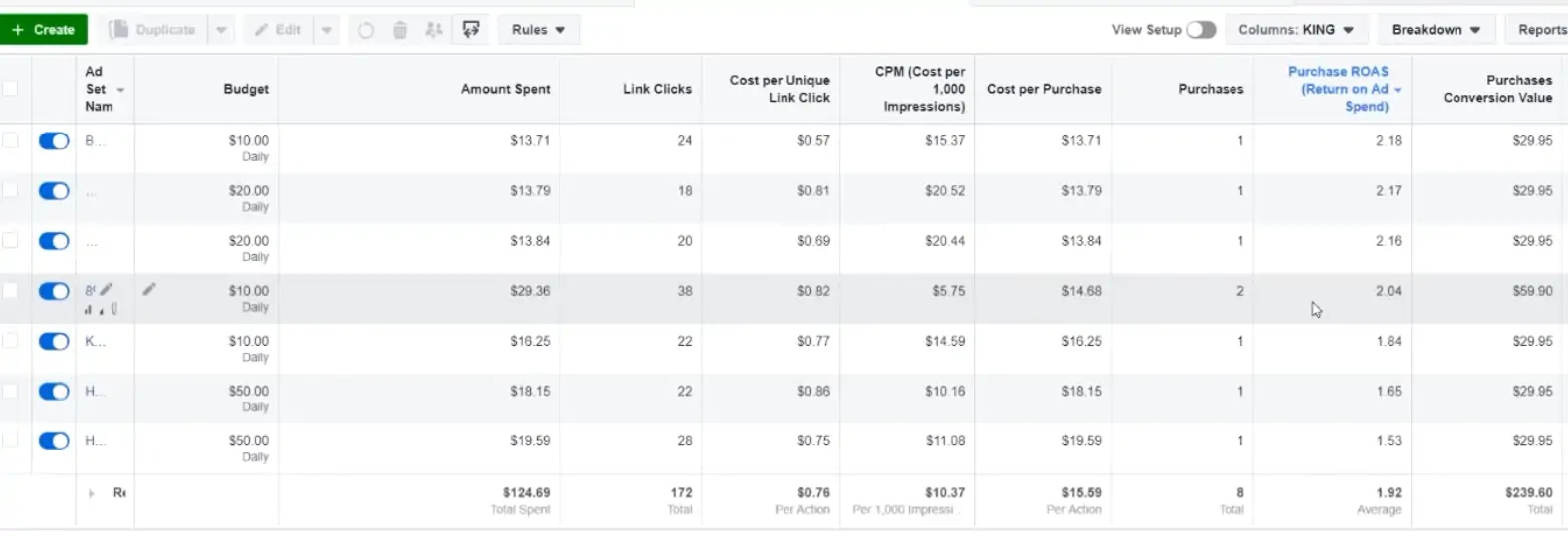
Do you know how to calculate your BER or Break Even ROAS? If not, don’t worry. Today, we will talk about it and show you how to calculate your BER very quickly. If you’ve been with us for a while, you will notice that we would try to make everything become very simple for you. And it truly is. Don’t think that something is so hard for you or you cannot do that. You just need some guidance from an expert or a product sourcing agent. And we are the one to help you. So, we would jump right to this topic now. Let’s scroll down and see!
How to calculate your BER?
Why should you calculate BER? How is it important? Previously, we tell you that when testing your ads, if any of them is not working, just turn it off. But how can you know when to do that? Basically, you need to ensure that your spending amount on your ads never is bigger than your profits generated by the ads. So Break Even ROAS will give you a benchmark based on which you can define which campaign is making money. Calculating your Break Even ROAS will allow you to scale your ad sets and decide when to kill your ads if they don’t perform well. You will know when your ads are breaking even or just losing your money.
Fundamentally, the formula to calculate Break Even ROAS is dividing your selling price by profit margin: BER = Selling price/ Profit margin. For easier understanding, we have an example here:
ABC product
AliExpress price: $5.04
Store Price: $10.08
Profit Margin: $5.04 ($10.08-$5.04)
BER = $10.08/$5.04=2
After calculating our Break Even ROAS, we recommend you put it in the name of the campaign. So that when you look at your ads, it will come to your mind as well. You don’t have to go somewhere and pull it out. Ok, then what will you do next? You will go back to your campaign and check your ad sets. We will show you how to evaluate.
Let’s say your BER is 2. When you look at all your ads by the Purchase ROAS column, you will see there’s ROAS number (Return on Ad Spend). There are some ads with the ROAS number which is close to 2 and below. It means those ads are losing your money. Technically, you will turn off all those ads, delete them or duplicate to give them a second chance.

This is how we use BER benchmark to define your ads’ performance and decide when to turn off your ads. It is crucially important because it helps to manage your ad campaign and cut loss when necessary.
When to kill and scale your ads?
Now you already know how to calculate your BER and use it to manage your campaign. In this part, we will go deeper into how to decide when to kill and scale your ads. And we’re telling you killing and scaling ads is super easy.
We scale when Ad set ROAS is higher than BER and the ad set has 2 or more sales. It’s profitable for sure. You might scale when the ad set has only 1 sale but we don’t think it’s promising. While scaling is important, killing your ad is also as critical. Most of the time, you will have a lot of ads making profits and a lot of ads just not. In order to manage properly, you will have to kill those that are unprofitable.
So we would kill ads when Ad set ROAS is at or lower than BER, when the Ad set spends over $10 without any sales, and finally when the Ad set has spent over 3$ and has a cost-per-click of 1$ and above. We never know any profitable Ad set with the cost-per-click of 1$ and more so just don’t hope on those Ad sets. So if your Ad sets have one of these, just turn them off.
We will take an example here. Let’s say your BER is 1.8. Below are the Ad sets we are going to scale. You will see that we have chosen all the Ad sets with ROAS is higher than 1.8 and with at least 2 sales.

And these are the ones we are going to kill because they are unprofitable and spending more our money. They all have ROAS is lower than our BER.

We would kill those ones as well because the cost-per-click is over 1$.

And that’s the way you would use your BER to scale and kill your ads to manage your campaign more effectively. We will talk more about scaling in the next article. For now, if you have any questions, please let us know.
Private Agent for Dropshipping Success